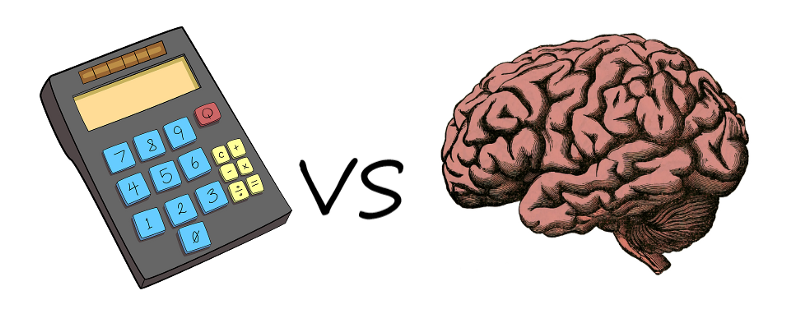Math is Cool

A few neat mathematical properties for your enjoyment

Jonathan’s math class — circa 2000:
“Take out your calculators. Now, somebody give me a number to divide by 7. I bet I can calculate the answer to the same number of decimal places as your calculator before you can even type in the calculation.”
With that, my Grade 5 teacher Mr Brown had my attention. We challenged him with different numbers, and each time he’d respond with the same thing our calculators told us.
“15 ÷ 7?” … “2.1428571”
“27 ÷ 7?” … “3.8571429”
“53 ÷ 7?” … “7.5714286”
I don’t know about the rest of the class, but I was suitably impressed.
It may not have been the first time that I fell in love with math, but almost 20 years later, that memory still sticks with me. That is saying something as I can’t remember what I had for dinner last night.
Back to 2018:
As teachers we often get asked “when am I going to use this?” And instead of trying to fit every concept into some “real world” scenario, we need to be okay with the fact that sometimes math is just cool. We are building problem solving, resilience and appreciation for the beauty of math. Here are some neat mental math tricks which have stuck with us from our days as middle school students or that we have come across as teachers.
Multiplying by 11
When learning to multiply, there are some products which are much easier to calculate than others. For example, many curricula will teach multiplying by 2, 5 and 10 before learning to multiply by 3 and 4. I know in grade 3 we had to memorize our multiplication tables up to 10 x 10, but we also learned to multiply single digits by 11 which was actually easier than multiplying by say 3.
Most of us know that to multiply single digits by 11 we just put that same digit twice, for example 3x11=33. But what about multiplying 11 by two or three digit numbers. It turns out that this can also be done quickly using mental math.
Here is the trick:
If we have a two digit number, we just split the two digits and put the sum of the digits in between. For example, if we are doing 52 x 11, we split the digits to get 5_ 2 and then put the sum, 7, in between to give us the product of 572.
If the sum of the two digits is greater than 9, we just carry the tens digit. For example, 78 x 11 we would split the digits 7 _ 8, find the sum, 15, and put in between, but carry the 1 to the 7 to give use 858.
This trick can be extended to three or more digits by keeping the first and last digit and then adding pairs of adjacent digits. For example, 125x11 we would start with 1 _ _ 5, add 1+2=3 and 2+5=7 to get 1375.
To see a proof of why this works, go to our article: Math is cool — Explained.
Squares of numbers ending in 5

Do you ever find your mind buzzing and want a distraction? We both like squaring numbers in our head. Jon can get up to 50 squared, Elisha a little bit less as she is more into meditation. You can use the perfect square trinomial pattern (a+b)²=a² +2ab+b² as a starting point, but there are so many beautiful patterns along the way. Numbers ending in 5 are a dream.
Here is the trick:
First of all, any number that ends with 5 when squared will end with 25. To then find the preceding digits we take the digit(s) preceding the 5, let’s call it “n”, the product of (n)(n+1) will go before the 25 and there you have it.
For example, let’s look at 15², which many people will have memorized as 225. We know 15² will be of the form _25. We take the 1 from before the 5 in 15 and multiply it by the next biggest integer 2 to get (1)(2)=2 and this goes before the 25 to get 225.
Let’s go bigger and use our previous trick and do 115². We know it will end with 25. We then need to calculate (11)(12) to go before the 25. Using our previous trick or from memory we can get that (11)(12)=132, so we get that 115²=13225. Pretty cool.
To see a proof of why this works, go to our article: Math is cool — Explained.
Dividing by 7

As we said in the introduction, Jon’s math teacher showed off his mad skills of dividing by 7. How did he do it?!
Many would have memorized most of the decimal equivalents of unit fractions (1/n) for denominators of 2, 3, 4, 5, 8, and maybe 6 and 9. From there you can fairly easily find the decimal equivalent of the non-unit fractions by repeated addition or multiplication.
1/2 = 0.5
1/3 = 0.3333..
1/4 = 0.25
1/5 = 0.2
1/6 = 0.1666…
1/8 = 0.125
1/9 = 0.1111…
What about 7?
All you need to know is the sequence 1,4,2,8,5,7 and repeat. Okay, so that requires a little bit of memorization, but memorization isn’t a bad skill to develop.
1/7 = 0.142857142857…
This is not overly pleasant to do repeated addition or multiplication on like the other unit fractions.
However, all we need to do to find the non-unit fractions is to start the sequence at a different point. You can use estimation or go one at a time to know which number to start at.
1/7 = 0.142857142857142857…
2/7 = 0.2857142857142857…
3/7 = 0.42857142857142857…
4/7 = 0.57142857142857…
5/7 = 0.7142857142857…
6/7 = 0.857142857142857…
This was the trick that Jon’s teacher used in grade 5. How cool!
To see a proof of why this works, go to our article: Math is cool — Explained.
Have any other mathemagic tricks? Share them in the comments.
